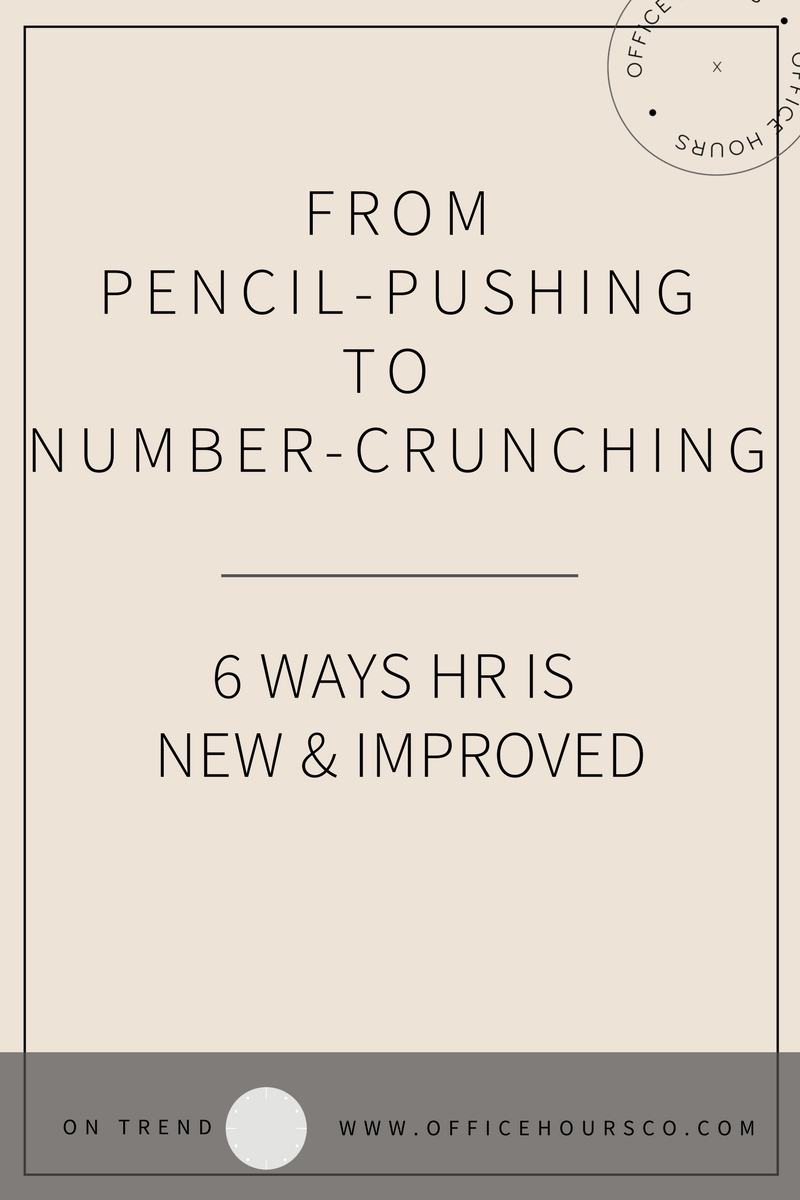
Telling someone you work in HR used to conjure images of listless pencil pushers surrounded by mounds of paperwork. The department has long been synonymous with processing, tree-killing, and file-storing. In recent years, however, HR has undergone a remarkable transformation. Formerly functioning as mainly administrative, the department is now predominantly strategic. Here are the six ways HR has changed direction and set its compass to strategy, according to the latest update from SHRM, in our own words.
1. HR is Social
As social media approached the brink of their usership explosion, companies were hesitant to permit employees to engage in these media while in the workplace. But nowadays, many employers have embraced the widespread popularity of these technology trends and even adopted some as standard practices. Don’t be surprised if instant messaging and other quick, efficient forms of exchanging information replace time-consuming emails as companies aim to streamline communication.
2. HR is Consumer-Driven
Benefit programs of the past primarily addressed health and retirement exclusively. As both employers and employees realize the merit in flexible plans and individualized options, companies are now shifting toward a consumer-driven benefits model. Rather than having limited choices, employees would be “allocated a set amount that they can spend on the perks that best met their needs.” This change means nixing policies that give unbalanced advantage to specific life events, such as paid parental leave. Employees would instead receive regulated allotments, which they can spend on whatever benefits they choose from an expanded list that accommodates varying lifestyles.
3. HR is Constant with Feedback
This switch is simple. Companies are placing less stock in the annual performance review and checking in more often throughout the year. As opposed to a potentially misleading one-time evaluation, frequent snapshots present a more accurate portrayal of an employee’s effectiveness. Furthermore, continual meetings between managers and subordinates allow for flexibility and informality, since not every occasion has to serve as the be-all-end-all assessment. The fluid nature of recurring check-ins means they can easily be rescheduled in the case of an unavoidable work-life conflict. Sound familiar? Another reason why Office Hours is obsessed with flexibility.
4. HR is Flexible
When technology first enabled employees to work remotely, many companies downplayed the positives and emphasized the drawbacks. Employers bemoaned the loss of face-time, valuing physical presence over work output, and buried themselves with concern over policies outlining who qualified for off-site work. Over the past two decades, though, the support and incorporation of technology-driven, remote job opportunities have increased dramatically. In fact, a SHRM study revealed that three times as many companies offered telework last year than did in 1996.
5. HR is Gig-Centered
According to McKinsey Global Institute, slightly over 1 out of 4 U.S. employees were gig workers in 2016. This powerful figure only continues to rise, friends. To what can this gig growth be attributed? At the risk of sounding repetitive, I’m going to hail the appeal of flexibility. From an organizational standpoint, contracting independent employees is a brilliant model. In order to capitalize on the gig potential, however, HR departments must invest in creative ways to maintain successful workers by equipping them with the same perks as actual employees, including paid days off and health benefits.
6. HR is Analytical
As I mentioned before, referring to HR in the past would cause people’s eyes to glaze over. Today’s HR climate, on the contrary, has abandoned its dull filing cabinets and transitioned from administrative to strategic. Analytics is the catalyst behind the reform, which has elevated data to priority number one. This focus on logical analysis–whether predictive, as it relates to candidates, or recruitment, in terms of employees–is transforming HR into a numbers game. Now driven by data, many HR departments have found themselves reporting to CFOs instead of CEOs. How’s that for shattering the antiquated stereotypes?
The Gist:
Now more than ever, HR is out with the old and in with the new. Permanently erase whatever archaic, paper-clad images come to mind when hearing those two letters! From daily communication to benefit plans to remote gig workers, the department at large has been redesigned into a structure founded upon and propelled by data and analysis. No matter what the numbers show in the future, HR must be ready to respond and must remain flexible in order to do so. Office Hours is dedicated to flexibility and poised to face the ever-evolving state of HR. Bring it on!

